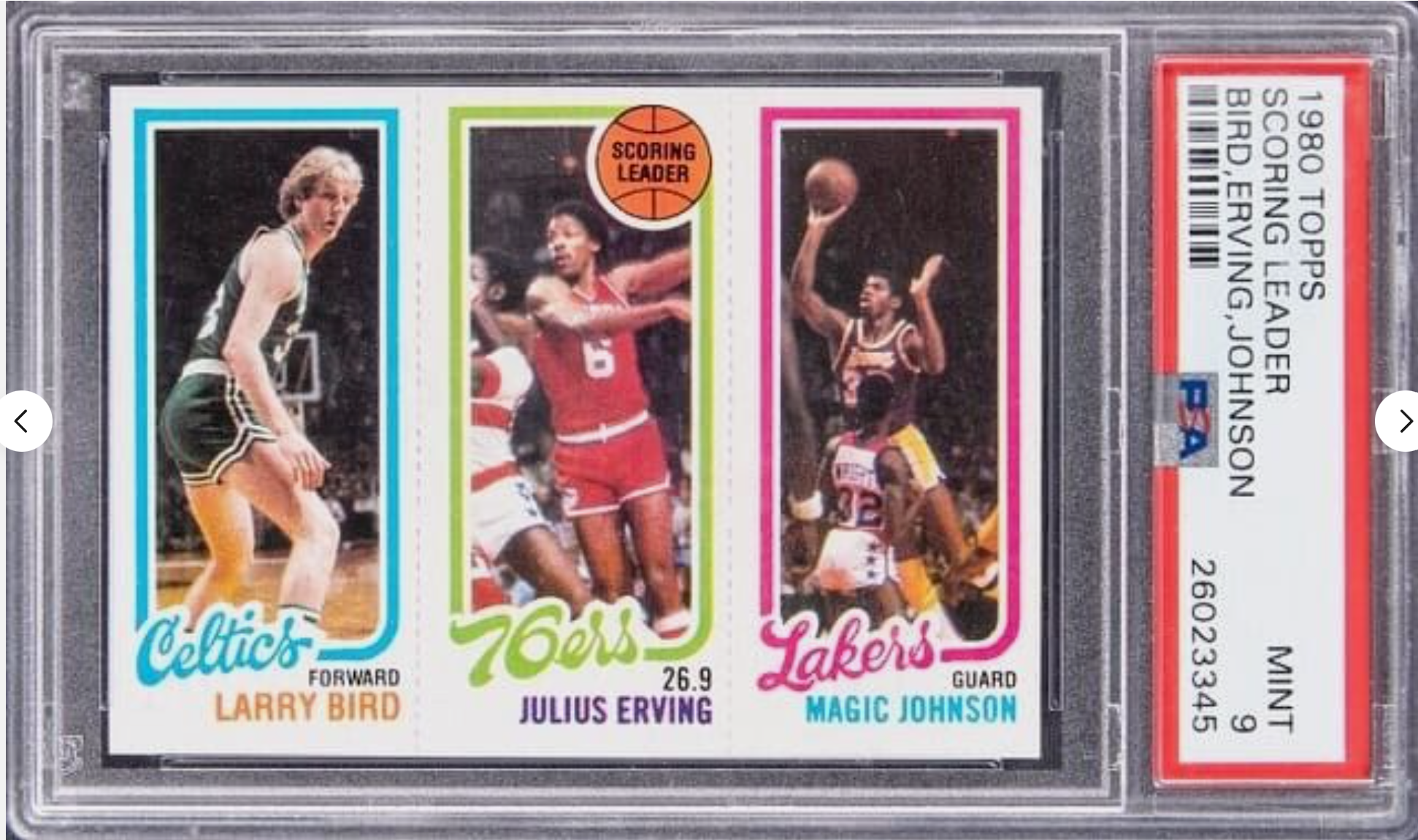
A Legendary Assembly: The 1980 Topps Bird, Johnson, and Erving Card
The 1980 Topps basketball card featuring Larry Bird, Magic Johnson, and Julius Erving is more than just a collectible; it’s a cherished artifact that encapsulates a pivotal moment in basketball history. This iconic card brings together Bird and Johnson, two future legends, in their rookie season, alongside the already legendary Erving. With its innovative design, rarity, and the enduring legacy of the players, this card has become a cornerstone in the world of sports collectibles.
Larry Bird and Magic Johnson, who would later go on to ignite one of the most storied rivalries in sports, are immortalized on this card at the dawn of their professional careers. Their inclusion in this card captures their early moments of greatness and sets the stage for the fierce competitions that would follow throughout their careers. And with Julius Erving, known for his dynamic play, joining them in the center, this card becomes a true artifact of basketball greatness.
The 1980 Topps card stands out from others with its unique three-panel design that allows each section to be separated. However, it is the unseparated, intact card that collectors covet most. Preserving these cards in their original form has become a priority among collectors, as the fragility of the perforated design makes well-preserved examples exceedingly rare and highly valued. The innovative design, coupled with its rarity, adds to the appeal and desirability of this card.
The enduring legacy of the players featured on this card further enhances its stature in the world of sports collectibles. Larry Bird and Magic Johnson’s rivalry defined an era of basketball, captivating fans worldwide with their individual brilliance and intense competition. Julius Erving, known as Dr. J, brought his own unique style to the game, expanding the boundaries of what was possible on the basketball court. This card captures a serendipitous convergence of their paths, signifying a turning point in basketball history.
The release of the 1980 Topps Bird/Johnson/Erving card marked a new era in sports card collecting. It showcased the potential of sports cards as more than just collectibles; they became historical artifacts that celebrated iconic moments and figures in sports. The card’s release paved the way for future collectibles that would capture the imagination of sports fans and collectors alike, forever changing the landscape of sports memorabilia.
In the world of sports card collecting, the 1980 Topps Bird/Johnson/Erving card holds a special place of honor. Its value has consistently appreciated over the years, driven by its rarity and the iconic status of the players depicted. Today, it represents a pinnacle of sports memorabilia collecting for many enthusiasts, a tangible artifact that symbolizes the greatness of Bird, Johnson, and Erving.
Owning this card comes with the responsibility of preservation. The unique structure of the card requires careful handling and storage to maintain its condition and, by extension, its value. Collectors recognize the importance of preserving this piece of basketball history for future generations to appreciate and enjoy.
The 1980 Topps Bird/Johnson/Erving card has transcended its physical form to become a cultural icon. It serves as a reminder of an era that saw the rise of the NBA’s popularity and the emergence of modern basketball. This card is not just a collectible; it represents a timeless piece of basketball heritage that takes fans back to the dawn of a golden era in the NBA.
In conclusion, the 1980 Topps basketball card featuring Larry Bird, Magic Johnson, and Julius Erving is a testament to a transformative period in basketball history. It is cherished by collectors not just for its monetary value but for the nostalgic journey it represents, taking fans back to the early moments of three basketball legends. This card remains one of the most sought-after and respected pieces in the world of sports memorabilia, symbolizing the intersection of athletic greatness and historic significance.